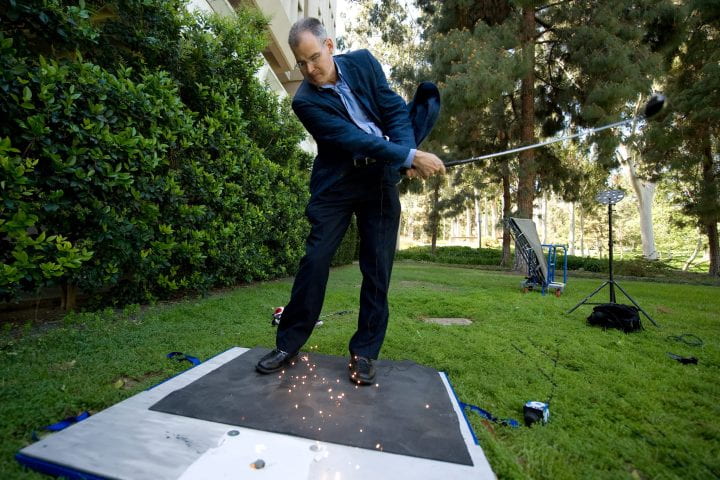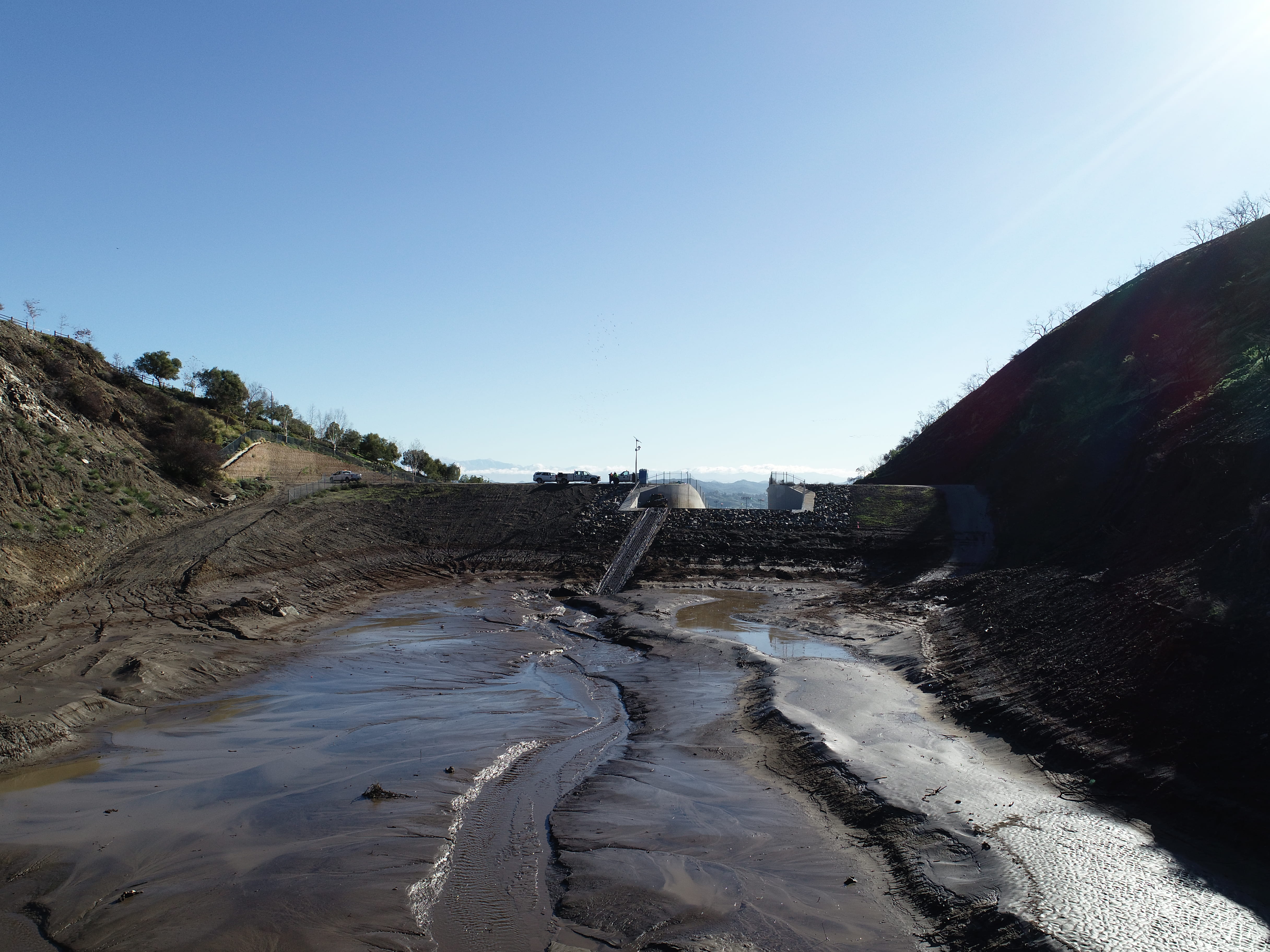Playing with fire
Titanium golf clubs can generate sparks, ignite brush in the rough, UCI study finds

Pros at this week’s Masters Tournament probably don’t need the advice, but for weekend duffers, UC Irvine engineering professor James Earthman has a message: no titanium alloy clubs in the rough, please.
He and fellow researchers discovered that golf clubs made with the lightweight metal can cause dangerous wildfires. When one is swung and strikes a rock, it creates sparks that can heat to more than 3,000 degrees Fahrenheit for long enough to ignite dry foliage, according to findings published recently in the peer-reviewed journal Fire and Materials.
The study was undertaken after Orange County, Calif., fire investigators asked UC Irvine scientists to determine whether such clubs could have caused the blazes at Shady Canyon Golf Course in Irvine and Arroyo Trabuco Golf Club in Mission Viejo a few years ago.
“One fire almost reached homes before they stopped it. This unintended hazard could potentially lead to someone’s death,” said Earthman, lead author on the work. “A very real danger exists, particularly in the Southwest, as long as certain golf clubs remain in use.”
He suspected right away that the titanium heads on some clubs designed for use in “the rough” – natural areas off irrigated fairways – could be to blame for the fires. He recalled a friend from graduate school whose hand was badly burned when he reached into a jar to wipe away a titanium film that had formed.
Earthman also knew from his own time on the links that most golf clubs have stainless steel heads. However, a significant number in circulation at rental shops or in people’s personal bags have titanium alloy soles. Such alloys are 40 percent lighter, which can make the clubs easier to swing. Sometimes, titanium alloy clubs are selected to hit errant balls out of tough spots. And in Southern California, those spots are often in flammable scrub brush.
The researchers painstakingly re-created in the lab course conditions on the days of the fires. Using a high-speed video camera and a powerful scanning electron microscope, they found that when titanium clubs were abraded by grazing hard surfaces, intensely hot sparks flew out of them. In contrast, standard stainless steel clubs generated no sparks.
“Rocks are often embedded in the ground in these rough areas of dry foliage,” Earthman noted. “When the club strikes a ball, nearby rocks can tear particles of titanium from the sole of the head. Bits of the particle surfaces will react violently with oxygen or nitrogen in the air, and a tremendous amount of heat is produced. Dry vegetation that comes into contact with the resulting sparks can ignite in flames instantly.”
Hundreds of newspapers, online sites, and television and radio stations picked up news of the research when it was released in mid-March. Earthman spent hours patiently demonstrating the sparks and answering reporters’ questions. Being the subject of a mainstream media blitz was a first for the chemical engineering & materials scientist, who’s more used to scholarly journals. But he said it was important to get the word out to the public.
Co-authors on the paper are Janahan Arulmoli, Bryant Vu, Ming-Je Sung and Farghalli Mohamed, also from UC Irvine.


